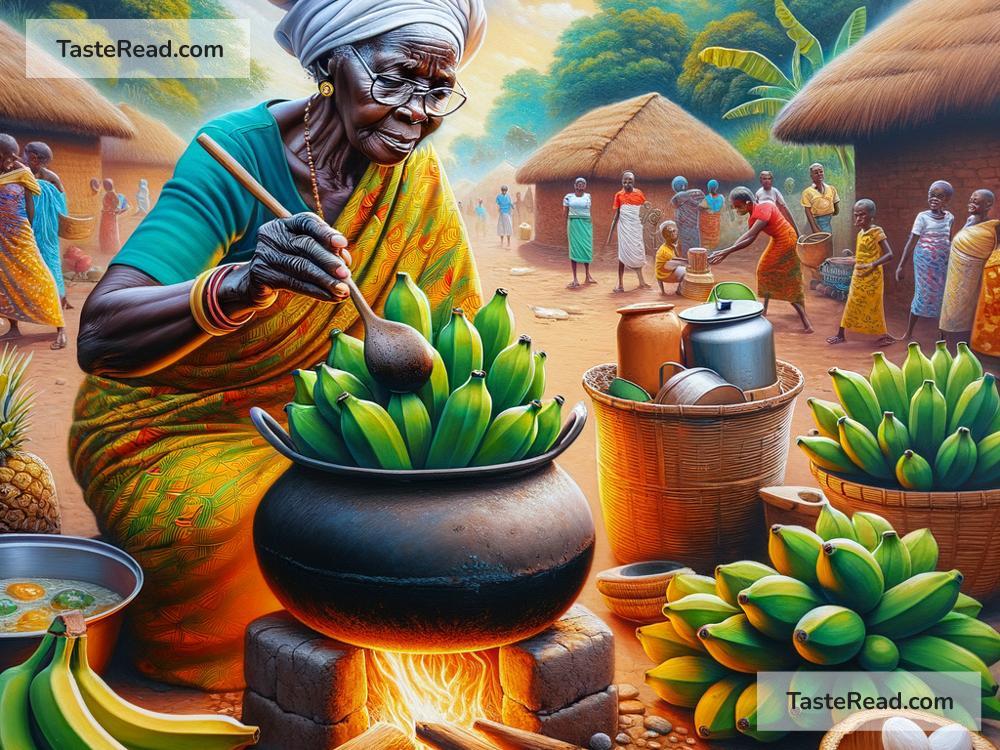The Cultural Significance of Ugandan Matoke (Cooked Bananas) Dishes
Matoke is not just food in Uganda; it is a symbol of culture, tradition, and identity. This beloved dish, made from steamed or boiled green bananas, holds a special place in the hearts of Ugandans. For centuries, it has been one of the staple foods that bring people together, tell stories, and celebrate the vibrant heritage of Uganda.
What Is Matoke?
Matoke refers to cooked green bananas, which are a type of banana often grown in Uganda’s fertile lands. These bananas are longer and thicker than the sweet bananas that people eat raw. Unlike common bananas, matoke bananas are starchy, making them perfect for cooking.
The process of preparing matoke typically begins by peeling the bananas and steaming or boiling them until they are soft. The cooked bananas are then mashed or served whole, often paired with sauces made from meat, beans, or groundnuts (peanuts). Matoke can also be combined with vegetables, spices, and herbs to create rich and flavorful dishes.
A Staple Dish Across Uganda
Matoke is so important in Uganda that it has become almost a national dish. It is a regular feature at family meals, festive celebrations, and community gatherings. People across Uganda love matoke not just because it is delicious but also because it is nutritious and filling. Its starchy texture provides energy, while sauces and accompaniments add variety and flavor.
The dish is also remarkably adaptable. Every region in Uganda has its own way of preparing matoke, reflecting the diversity of cultures and traditions within the country. From the Buganda Kingdom to other tribes like the Banyankole and Basoga, matoke recipes differ slightly based on the ingredients and cooking techniques passed down through generations.
Matoke and Ugandan Culture
Ugandans do not see matoke as just food—it is a deeply cultural experience. The dish is often associated with hospitality and family bonds. When visitors come to a Ugandan home, it is common for matoke to be served, showcasing the warm and welcoming nature of the people.
Preparing matoke also plays a role in family life. Traditional cooking involves peeling the bananas, steaming them in banana leaves, and mashing them. These tasks are often done as a group, leading to conversations and strengthening relationships. The sight of banana leaves steaming on a stove or fire is a comforting image in many Ugandan homes.
Beyond the home, matoke is an essential part of celebrations like weddings, funerals, and festivals. It often takes center stage at feasts, where it is served with other dishes such as roasted meat, fried fish, or vegetable stews. Sharing matoke at such events symbolizes unity and togetherness.
Symbol of Agricultural Pride
Uganda is sometimes called the “banana republic” because of its massive production of bananas. The country’s agricultural richness plays a big role in its ability to make matoke such a widespread dish. In fact, Uganda is one of the world’s largest producers of bananas. The green banana is more than just a crop; it is a source of livelihood for millions of farmers.
Matoke showcases Uganda’s agricultural pride, with bananas grown on small farms and larger plantations. The banana plants are versatile, as the leaves are used for cooking or packaging, the roots contribute to soil health, and the fruit feeds the nation. In this way, matoke is directly tied to Uganda’s deep connection to its land and farming heritage.
A Dish That Evolves with Time
Matoke is not stuck in tradition—it continues to evolve with time. While older generations prepare it in the traditional way, younger Ugandans have experimented to create modern twists on the dish. Matoke is now included in casseroles, curries, and even international cuisine. These creative adaptations show how the dish remains relevant while bridging the gap between old and new ways of cooking.
Furthermore, Ugandan restaurants around the world often feature matoke as part of their menus, introducing the dish to people outside Uganda. It has become a proud representation of Uganda’s culinary heritage on the global stage.
Matoke Around the Table: Connection and Community
One of matoke’s greatest cultural achievements is its ability to bring people together. Eating matoke is not rushed—it is often enjoyed slowly while talking and connecting with others. This act of sharing food fosters bonds and memories. Whether in a rural village or a bustling city, the matoke meal encourages Ugandans to sit together, laugh, and celebrate life.
Even Ugandan children grow up learning the value of matoke, both as food and as a symbol of community. Many fondly remember their parents or grandparents peeling and cooking the bananas, often teaching them how to prepare the dish the family way.
Conclusion
Matoke is more than just cooked bananas—it is a piece of Ugandan culture and identity. It represents family, tradition, and the beautiful connection Ugandans have with their land. Whether served at a small family dinner or a big community feast, matoke brings warmth, joy, and a sense of belonging. It is a dish that tells the story of Uganda and its people, one bite at a time.


